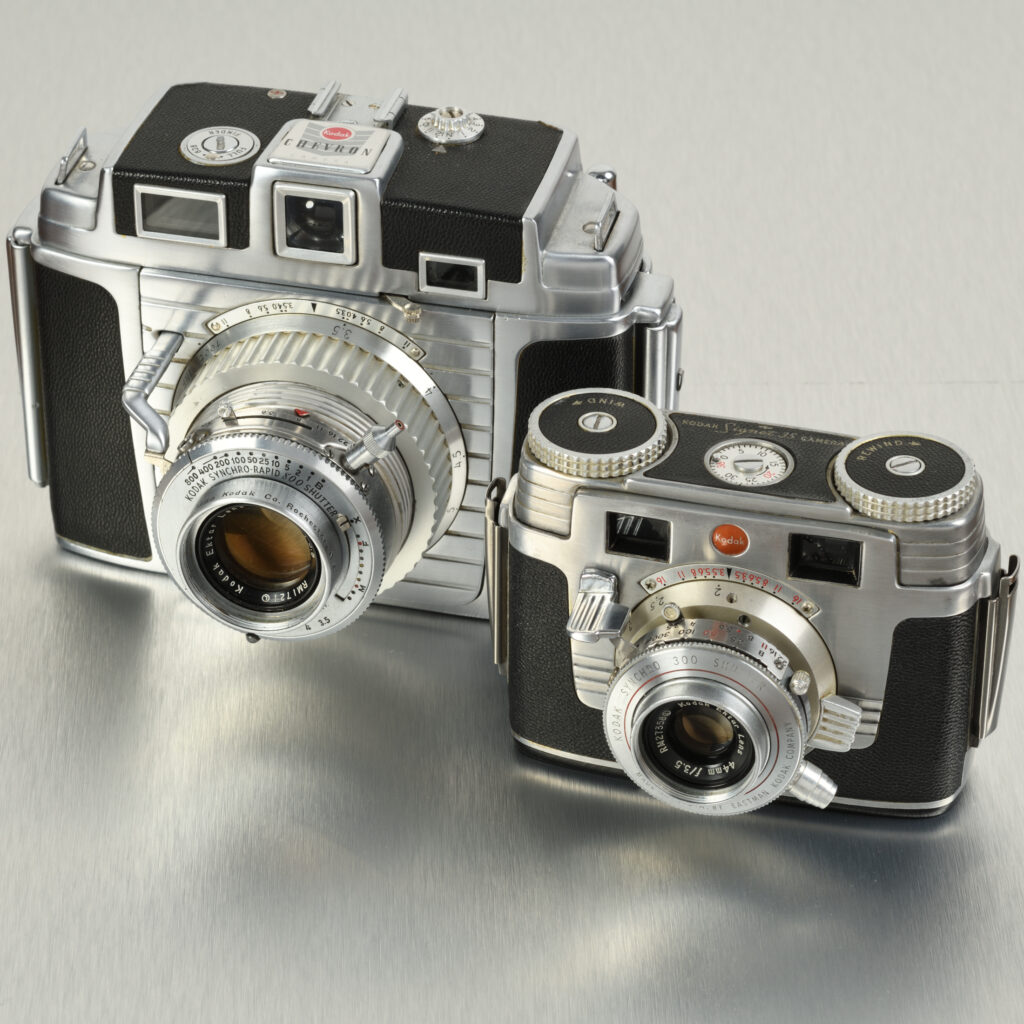Many years ago, a neighbour offered me a camera he had acquired “from a mate” for £10. I had never seen a Balda or even heard of one but it looked interesting and I paid him the money. I shot a few rolls in the Balda and it was obviously a good quality 35mm rangefinder with a fixed Baldanar 45mm f2.8 lens. What happened to this camera I have absolutely no recollection, but when I saw the Balda Super Matic on that auction site a few years ago I had to bid and won it for just under £10.
Specifications
- Balda Super Matic 1 introduced around 1960
- Shutter B, 30, 60, 125, 250 and 500
- Schneider Xenar 45mm f2.8 lens. Apertures f2.8 – f22
- Built in coupled Selenium Cell light meter with pointer display in view finder
- Manual exposure and Shutter Priority automatic exposure, powered by the Selenium Cell
First Impressions
The Balda Super Matic is a strange looking camera. The top plate is bare apart from the cold shoe. The shutter release is on the front, below the viewfinder, with a standard cable release screw on the bottom of the button. Focus, shutter speeds and aperture are selectable by rings on the lens. The film advance, rewind lever and frame counter are all on the bottom plate. Film advance is by turning a large folding key 180 degrees and the action is quite satisfying. There is a lever, which doubles as a camera stand, to select rewind, and when you select “R” the rewind handle pops out. The frame counter needs to be set manually when you start a new film and it is partially obscured by the film advance key. To load a film you push two buttons on the side and the whole back plate comes off. The rangefinder patch is not the dimmest and not the brightest, but it is easy to use.

In Use
I quickly realised the light meter pointer was missing in the viewfinder, so I usually rely on sunny 16s or a handheld meter, however, I did try a shot on the Automatic setting and it seemed to work quite accurately. The film loads the opposite way to most other cameras, resulting in the negative frame numbers being upside down. That film advance key is really nice in use.
Balda Super Matic Example Photographs
Colour shots on Agfa Vista 200



Black and White shots on Ilford Delta 100



This last shot is on automatic and the Balda has selected a wider aperture
Conclusion
There is a lot to be said about the quality of cameras made in the late 50s and early 60s before the days of the Instamatic and other cheap family cameras. Balda was not a premium brand, but this camera would have represented quite a substantial outlay for a family in 1960, around £350 (converted for inflation). This Balda Super Matic is still working over 60 years after it was manufactured (even without the light meter pointer) and that is a testament to the design and manufacturing employed. I love this camera!
Share this post:









Comments
Jeff T. on Balda Super Matic – Quirky but fun
Comment posted: 28/09/2024
Comment posted: 28/09/2024
Louis A. Sousa on Balda Super Matic – Quirky but fun
Comment posted: 28/09/2024
Comment posted: 28/09/2024
Gary Smith on Balda Super Matic – Quirky but fun
Comment posted: 28/09/2024
Comment posted: 28/09/2024
Tony Warren on Balda Super Matic – Quirky but fun
Comment posted: 28/09/2024
Comment posted: 28/09/2024
Comment posted: 28/09/2024
Comment posted: 28/09/2024
Comment posted: 28/09/2024
Comment posted: 28/09/2024
Flashknappen on Balda Super Matic – Quirky but fun
Comment posted: 29/09/2024
Comment posted: 29/09/2024
Rhymer on Balda Super Matic – Quirky but fun
Comment posted: 30/09/2024
Comment posted: 30/09/2024
Comment posted: 30/09/2024